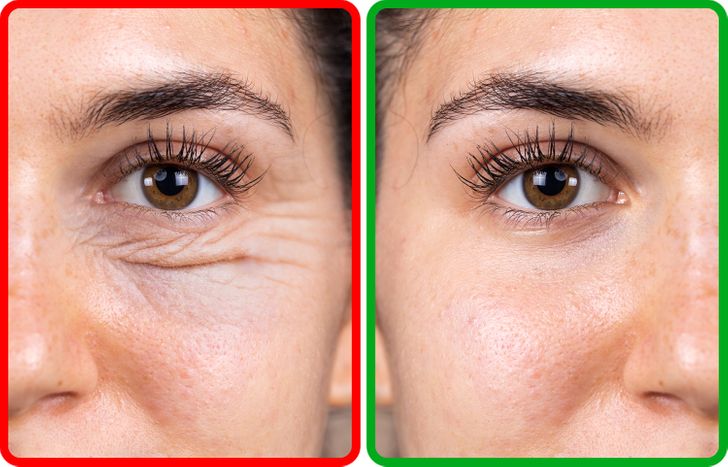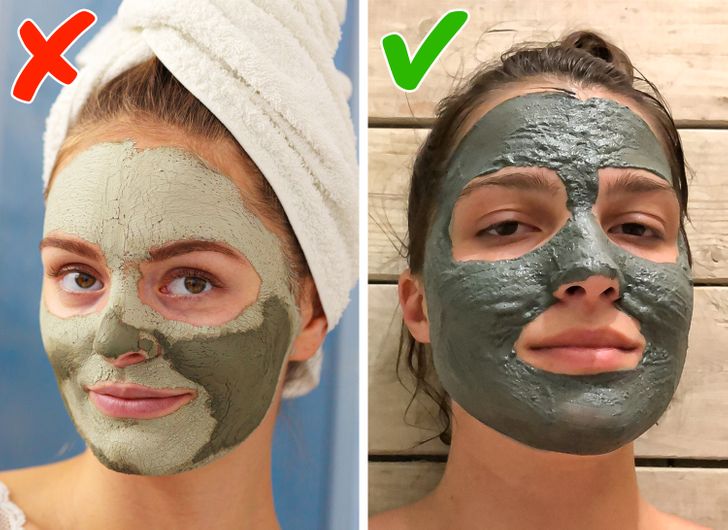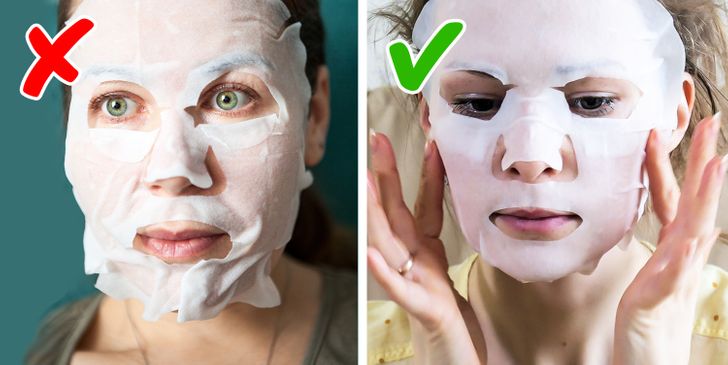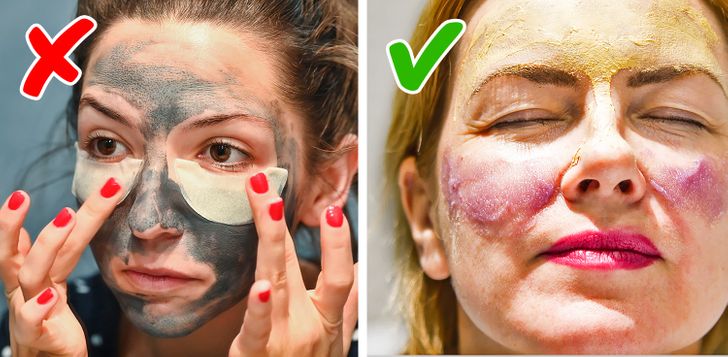I have under eye patches and it was even stated on the package that they need to be stored in the fridge 🤔
10+ Skin Care Mistakes We See in Commercials That Can Ruin Our Skin
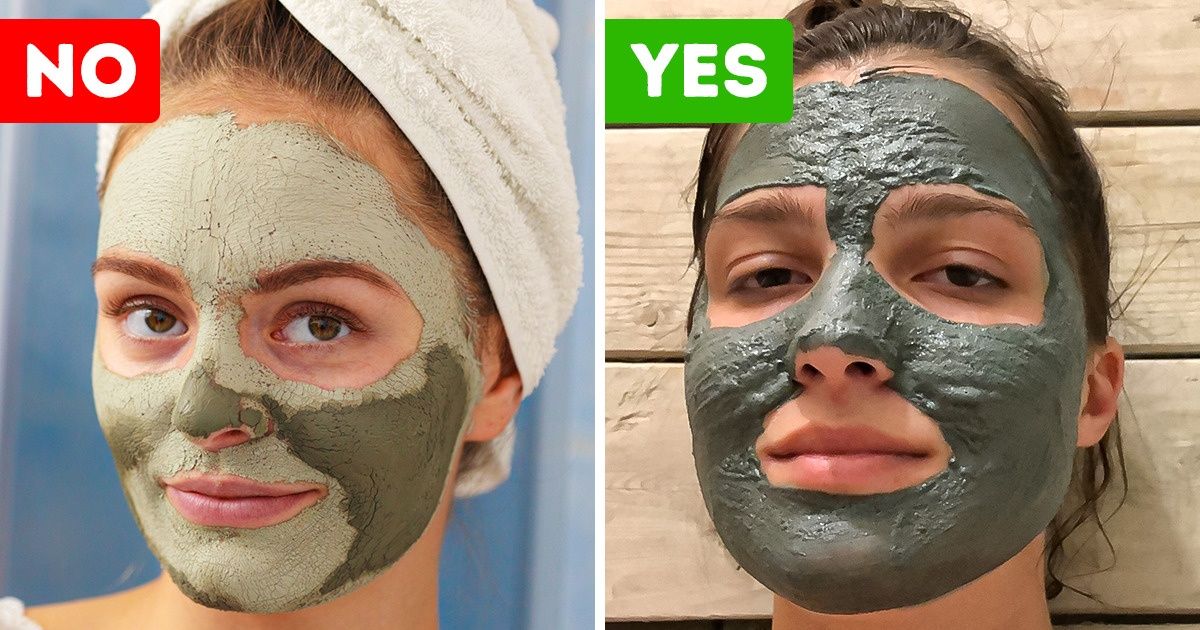
Almost all of us have some beauty products that we use every day, like masks, creams, and scrubs. We only choose different brands when we want to try something new. But reading all the instructions carefully doesn’t always keep us safe from the popular mistakes we make, either because we’re used to doing it a certain way or because ads tell us the wrong things.
We at Bright Side are quite amazed at some of the rules that we should follow (especially the one about clay masks) to improve the effectiveness of many beauty products.
Not using SPF on a daily basis
In the majority of the commercials we see, moisturizers or makeup products are applied on a bare face. According to dermatologists, we should apply sunscreen every single day, because when we are outside, we are constantly exposed to UV radiation. Even on a cloudy day, when there is no sun in sight, we should make sure to protect our skin by always using sun protection products.
We should apply SPF every 2 hours, no matter its value (SPF 10, SPF 15, SPF 50, etc.) — especially after heavy sweating or swimming.
Under-eye patches
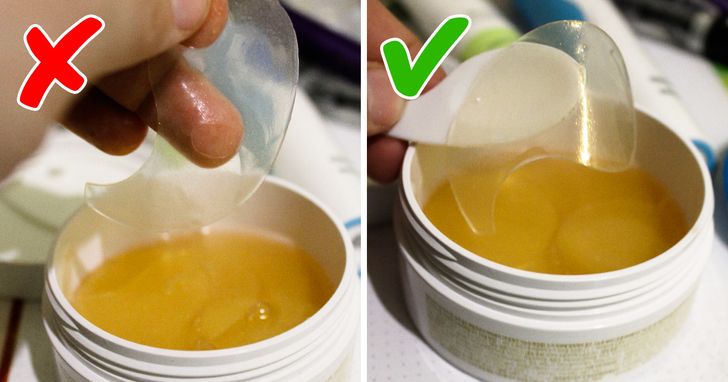
Under-eye patches are advertised as an emergency product to remove the swelling of the skin. Some manufacturers even promise their patches can remove wrinkles. But there are a few rules you should never forget to ensure that the patches are effective and don’t harm your skin.
- Don’t take the patches out of the pack with your hands. Very often, women in commercials apply under-eye patches with their fingers. But if you put your fingers into the pack, there’s a chance you’ll infect the essence the patches are soaked in. So it’s better to use a special tool to take the patches out. Some manufacturers put the tools into the packs.
- Don’t keep the patches on your face for too long. Manufacturers recommend spending only 15-20 minutes with the patches on. And there’s a reason why. When the patches give off all the moisture they have, they will start sucking the moisture out of your skin, which might lead to more wrinkles. So you shouldn’t keep them on for too long, even though many people do this, ignoring the instructions.
- Don’t store the patches in the fridge. Some experts say that it’s better to put the patches in the fridge before using them, and some people actually keep them in the cold all the time. Yes, cold patches will remove swelling faster. But the essence the patches are soaked in might be less effective if they’re kept in the cold for a very long time. So, ideally, just put the pack of patches into the fridge for 20 minutes before using them.
Creams and cream masks
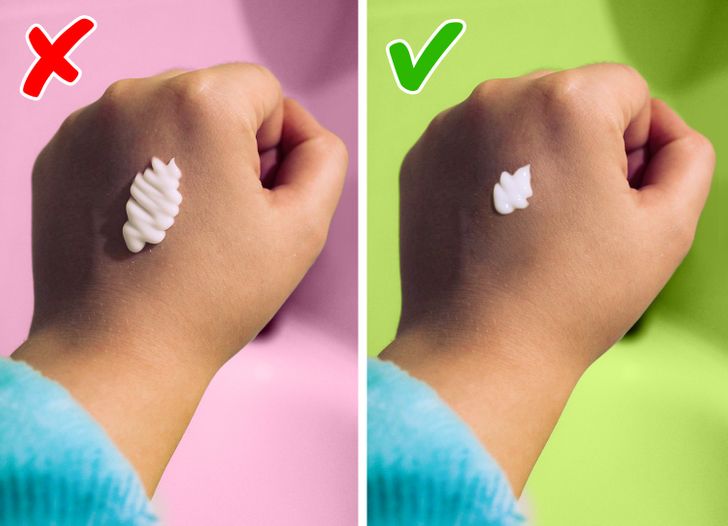
In ads, women put a lot of different creams on their faces. But even the best cream out there can turn your face into a greasy pancake if you use too much.
Interestingly, in ads, they spread the cream on the face so that all the skin has the same amount of cream. But it’s not always the right thing to do. You need to find the driest areas of your face. Maybe some spots have more wrinkles, so they need more cream. On average, any type of skin doesn’t need more than a pea-sized amount of cream for the entire face. Put less cream on the T-zone because it’s usually the greasiest part anyway.
The same is true for masks. Even if a manufacturer makes a commercial where girls put a thick layer of clay on their faces, it doesn’t mean you should do the same. The masks that are supposed to dry the skin should be applied to the greasiest parts of the face, and those that nurture the skin should go on the upper part of the forehead, the cheeks, and the chin (these are usually the driest parts).
Clay masks
Ads, and even some manuals, say that clay masks should be worn until the very end: until they get completely dry and even start to crack. But this is wrong — it will only harm your skin.
The clay absorbs the excess grease and removes dirt, but if you keep it on for too long, it will absorb the moisture from the skin and make it overly dry. Also, dry clay will pull the skin, which might lead to the appearance of new wrinkles. So you should apply clay masks for 10 minutes, tops, and remove them before they get dry.
Sheet masks
The main reason why sheet masks are so effective is that they cling onto the skin very tightly. It’s better to spend more time removing all the wrinkles and to let the mask touch all the areas of the face rather than applying it quickly, ignoring all the bubbles. Another typical mistake people make is applying these masks without cleansing the skin beforehand. If you don’t wash your face with a gel, the active ingredients in the mask will not get into the skin. It’s better not to skip other steps: tonics will prepare the skin to absorb the nutrients, and peeling will remove the dead cells that prevent the mask from being as effective as possible.
And remember to read the manual carefully! Some masks are not meant to be used every day; others should be kept on for a longer time than the standard 15-20 minutes, and some need to be washed off after your remove the sheet itself.
Cleansing
Scrubs with aggressive particles damage the skin more than actually exfoliate it. To remove the dead cells, it’s better to use acid-containing products. If you still prefer mechanical exfoliation, wear a glove and cleanse the skin.
Another popular misconception is that oily skin needs the use of scrubs very often. In fact, the more often you use scrubs, the more greasy the skin will be. So don’t use scrubs more than 2-3 times a week.
If you use acid-containing products, always apply sunscreen before going outside. Most sunscreens are advertised as something you use on a sunny day, however, they should be used even on cloudy ones.
It’s best not to forget about implementing sunscreen in your everyday skin care routine, even if you don’t use acid-containing beauty products. This will help you avoid pigmentation and early aging. Remember that sunscreen should be applied about every 2 hours.
Other mistakes
-
Using too many beauty products in a row can be bad. Nowadays, there’s such a wide variety of beauty products that we become tempted to buy and use all of them at once. But you should know that there are certain components that shouldn’t be used together at any time. Also, when you use too many products at the same time, you might clog the pores and reduce the protective functions of the skin, even if all the products are very high-quality. All topical products are effective with up to 0.3% of it getting absorbed into the skin, which means the more you add, the less effective each of them is.
-
Rubbing the face too hard can be harmful. Cotton swabs and even regular towels can stretch the skin if you rub the face too much. The smoother the swabs you use are, the better they are for your skin. If you also use cotton swabs to apply skincare products, it’s important to make sure the swab is very wet. It should just slide on the skin without stretching it.
-
Not cleansing well enough can be problematic. If you’re used to washing your face with the same motions all the time, there’s a chance you aren’t cleansing the upper part of your forehead, the area under the chin, and the ears well enough. So pay more attention to these areas.
-
You sleep with your hair down. The grease from your hair and other products might get on your face while you sleep, and these products are not meant to come into contact with the skin on the face. So it’s better for the skin if you keep your hair in a ponytail at night.
What beauty products do you use every day? Have you made any of the mistakes mentioned in the article?
Bright Side has its own podcasts now. Take cool articles with you and listen to new stories whenever and wherever you want.
Comments
Related Reads
10 Signs You’re Way Too Nice for Your Own Good

15+ Heartfelt Times When Women Proved There’s a Rainbow After Every Storm

15 Stories That Remind Us to Stay Kind, Even When the World Isn’t

I Refuse to Obey My Pregnant DIL’s Demand to Turn a Merry Christmas Into a Vegan One

I Adopted a Son—Then His Biological Family Shattered Our World

I Refuse to Beg for Time With My Grandson

I Refused to Let My Husband Be a Birth Partner for His Best Friend, Now I’m the Villain

I Refused to Let My Stepmother Dictate My Wedding—I Have Been Too Kind

I Refuse to See My Stepfather Again After He Tried to Cancel My Mom’s Savings

I Refuse to Share My Inheritance With My Sister—She Doesn’t Deserve a Penny of It

I Demanded Compensation for My Work Injury—My Boss Got HR Involved

I Refuse to Let My Parents Manipulate Me, I Am Not Their Puppet

